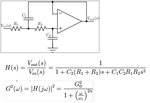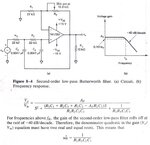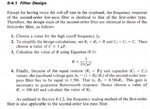varunkant2k
Full Member level 6
Hi All,
I was trying to analyze 2nd order low pass butter worth filter. I have attached the image below.
I have few questions unresolved. I understand that , 2nd order filter response can be achieved by just connecting C1 bottom terminal to ground. Again we can provide gain independently from active device close loop gain Af = 1+R1/R2. ( image shows unity gain) ( In first order Butter worth active filter there is no such gain limit.)

1. What is the advantage of connecting C1 bottom terminal to Active device output?
2. Why we need to give Af = G0 1+R1/R2 = 1.586 ( refer "op amp and linear integrated circuits by ramakant gaikwad") to achieve 2nd order butter worth filter response?
thanks
I was trying to analyze 2nd order low pass butter worth filter. I have attached the image below.
I have few questions unresolved. I understand that , 2nd order filter response can be achieved by just connecting C1 bottom terminal to ground. Again we can provide gain independently from active device close loop gain Af = 1+R1/R2. ( image shows unity gain) ( In first order Butter worth active filter there is no such gain limit.)

1. What is the advantage of connecting C1 bottom terminal to Active device output?
2. Why we need to give Af = G0 1+R1/R2 = 1.586 ( refer "op amp and linear integrated circuits by ramakant gaikwad") to achieve 2nd order butter worth filter response?
thanks


